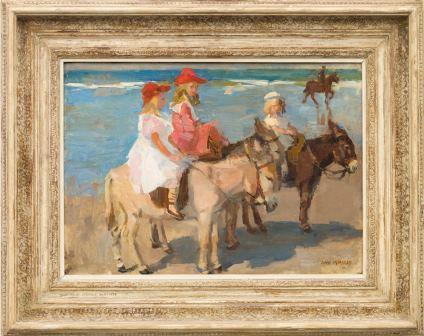The procedure
The restitution application was prompted by the listing of the claimed painting on the website Museum Acquisitions since 1933, an online database concerning items held by museums with provenances that – as explained on the website – indicate theft, confiscation, forced sale or other suspicious circumstances that occurred during the Nazi regime.
The Committee conducted an investigation into the facts in response to the Minister’s request for advice. Meanwhile, in a letter of 7 October 2014, the Applicant submitted a preliminary report containing the results of his own investigation. On 3 November 2014 this was supplemented by further research results he had obtained. He also requested a discussion with the Committee. In the context of organizing the investigation, a discussion took place on 19 February 2015 between the Applicant, the Chairman and two of the Committee’s researchers. This was followed on 12 March 2015 by a discussion between the Applicant and two researchers.
The results of the Committee’s investigation of the facts are recorded in an overview of the facts dated 9 November 2015, which was sent to the Applicant and the Minister. The Minister responded to it in a letter of 24 March 2016. The Applicant responded in an e-mail of 28 March 2016. In the meantime the Committee conducted research into one supplementary point. The results of this supplementary research were sent to the parties in a letter of 21 April 2016.
The case was heard on 23 May 2016. The Applicant was there assisted by EE, curator of the Camp Westerbork Memorial Centre. On behalf of the Minister the hearing was attended by FF, policy assistant, and GG, Dutch National Art Collection consultant. HH and II appeared on behalf of the Museum. Minutes were sent to the parties on 2 June 2016.
During the hearing the Applicant argued that the Committee could have conducted more research in files about Hausraterfassung (domestic property registration) and members of the SD (Sicherheitsdienst [Security Service]) and SS, and in the archives of the military authorities.
The Committee disagrees. Both the Committee and the Applicant carried out very extensive research. The Committee reported the results in the overview of the facts and the supplementary letter, in so far as it produced relevant information. The Applicant has furthermore not stated which information, according to him, should be sought and in what respect it could be relevant. Additional investigation as advocated by the Applicant would have been very laborious with a negligible chance of finding relevant data. In view of the circumstances the Committee believes that it cannot reasonably be required to do this.
